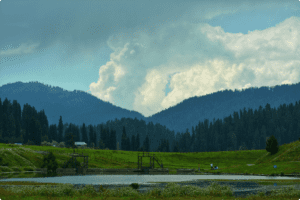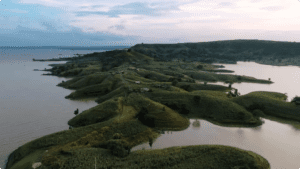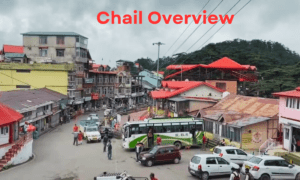Harsil Valley is an amazing find that I made while traveling to Uttarakhand. This location meets all of my needs: it’s remote, peaceful, serene, beautiful, cultural, and free of crowds. I had a couple of free days before my trek to the peaceful Sattal. Before beginning the trek, I intended to acclimate in Gangotri. A couple of red-roofed buildings surrounded by deodar trees caught my eye as I drove from Uttarkashi, which is 30 km before Gangotri. To get into this isolated village, I made a U-turn and crossed the Bhagirathi River bridge.
Harsil Valley
About Harsil Valley
Nestled in the heart of Garhwal, Uttarakhand, Harsil Valley is an offbeat paradise that offers a remarkable combination of natural beauty, cultural significance, and breathtaking landscapes. We cordially welcome you to travel through this charming location, discovering its hidden gems and creating lifelong memories.
Harsil is known for being close to Gangotri in Uttarakhand and is situated at an elevation of 2623 meters. However, you should add this small town to your list on its own merits, not just because of Gangotri. Plenty of apple orchards stretching up to 70 km in the village!
Harsil’s mythology
Most people think that Jalandhari and Bhagirathi, two rivers, were constantly at odds with one another, frequently fighting and trying to outdo each other. The adjacent towns and villages suffered greatly as a result of all of this fighting.
Gangotri Gateway and Beyond
In addition to being a destination in and of itself, Harsil Valley is the entry point to the renowned Gangotri National Park. The holy Ganges River originates in this park, which has great spiritual significance. Because of the region’s exceptional biodiversity and spiritual significance, pilgrims and nature enthusiasts travel there.
The Masterpiece of Nature
Harsil Valley’s breathtaking natural beauty is truly a work of art. One of the main tributaries of the Ganges, the Bhagirathi River, flows through the valley here with grace, providing an enchanting backdrop for your adventures. Everywhere one looks, the valley’s tall Deodar, Pine, and Oak trees are reflected in the sparkling waters of the river, producing a picture-perfect scene.
An abundance of orchards
The abundant apple orchards in Harsil Valley are one of its finest characteristics. With the delightful scent of apples filling the air, strolling through these orchards is more than just a visual treat—it’s a sensory experience. During the apple-picking season, you can even attempt to harvest these delicious fruits.
We will delve deeper into the events, sights, and cultural highlights of Harsil Valley in the next sections of this travel guide, giving you all the knowledge you need to organize a truly memorable vacation. Thus, prepare for an unforgettable experience of the enchanted Harsil Valley by packing your bags! Watch out on youtube:
How to reach Harsil Valley from Delhi
In the Garhwal region of North India lies Uttarakhand’s hidden gem, Harsil Valley. Those looking for a getaway from the bustle of city life will find sanctuary in this immaculate valley nestled in the foothills of the majestic Himalayas. A popular destination for nature lovers and spiritual seekers alike, Harsil Valley’s advantageous location provides access to the well-known Gangotri National Park.
By Road
Harsil Valley is easily accessible by road, providing a beautiful trip through Uttarakhand’s stunning landscape. The state has an excellent road system, and you can choose to drive there from large cities like Dehradun or Rishikesh. Traveling to Harsil is an adventure, with winding roads that take you through picturesque villages, dense forests, and breathtaking scenery.
The sole means of transportation to Harsil is by road because of its high altitude location. The good news is that it’s not a particularly challenging task. The small town has regular public transportation and a good motorable road connecting it to the rest of the country. You have two options for getting to Harsil: driving yourself or taking a bus.
The journey’s itinerary, which begins in Delhi, is listed below.
Delhi – Meerut – Muzaffarnagar – Haridwar – Rishikesh – Narendra Nagar – Chamba – Uttarkashi – Harsil
By Rail
The Dehradun Railway Station is the closest train station to Harsil if you’d rather travel in comfort by train. To get to Harsil, you can either take a bus or hire a taxi. You can enjoy the natural beauties of Uttarakhand while traveling by rail, which passes through breathtaking scenery.
By Air
Although there isn’t an airport in Harsil, the closest one with connections to domestic flights is Jolly Grant Airport in Dehradun. To continue traveling to Harsil Valley from the airport, you can take a bus or hire a taxi.
Best Time to Visit Harsil Valley
The time of year you visit Harsil Valley will have a big impact on how good your trip is. Every season brings a new charm to this perfect spot nestled in Uttarakhand’s Garhwal region. Let’s examine the ideal times to visit Harsil Valley taking into account its distinct weather patterns and the array of activities available throughout the year.
Spring: April through June
Weather: The Harsil Valley is magical in the springtime. The temperature ranges from 10°C to 20°C, making for a pleasant cool weather. The landscape is revitalized, brightened, and lush by the melting snow.
Best Time to Visit: Spring is the best season for hikers and those who enjoy the outdoors. As the trails spread out, beautiful hikes among rhododendron blossoms become possible. The scent of the blossoms permeates the air as the apple orchards reach their peak of bloom. Photographing and taking in the breathtaking beauty of the valley are at their best during this picture-perfect time.
Monsoon (July to September)
Weather: In Harsil Valley, the monsoon season brings temperatures averaging between 10°C and 22°C. At night, though, the temperature can drop considerably, particularly at higher elevations.
The best time to visit Harsil Valley is during the monsoon season, which runs from July to September. The valley experiences a lot of rain during this time, which can cause landslides and obstructions on the roads. Therefore, it is usually not advised to travel to Harsil Valley during the monsoon season.
Fall -Autumn (October through November)
Weather: Harsil’s autumn is a season of transition, with highs and lows between 10°C and 15°C. Clear skies and pleasant weather are left behind as the monsoon retreats.
Best Time to Go: Autumn is a great season for nature lovers and spiritual seekers. The Himalayan peaks are visible without interference due to the clear skies. It’s also the perfect time to travel to Gangotri to see the Ganges at its purest source.
Winter (December to February)
Weather: During this time of year, Harsil Valley becomes a winter wonderland, with lows of below zero. The valley is blanketed in thick layers of snow, creating a tranquil, pristine white paradise.
Best Time to Visit: Winter is your season if you enjoy snow and cold temperatures. Harsil has developed into a wintry paradise that is ideal for skiing, snowshoeing, and other winter sports. The valley assumes a distinct appearance, featuring icicles and frozen rivers that sparkle in the sunlight.
Harsil Valley is a beautiful place all year round because every season reveals a different aspect of its beauty. Select the time that best suits your interests and preferences to fully enjoy Harsil’s magic.
Places to Visit in Harsil Valley
Gartang Gali
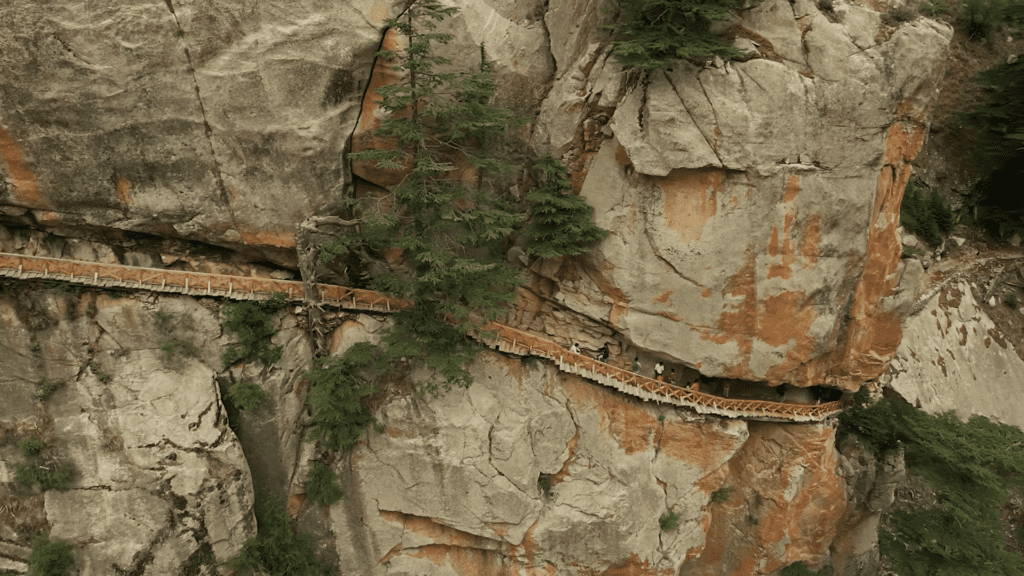
The Nelong Valley is home to the 150-year-old wooden stairway bridge, Gartang Gali. It is one of the world’s highest wooden bridges, rising to a height of 11,000 feet.
To promote trade between India and Tibet, Pathan traders from Peshawar constructed the bridge. Moreover, the Indian Army employed it in the 1962 Indo-China War. But because of security concerns, the bridge was off-limits to the public after the war.
Following significant repairs, the bridge was once again accessible to tourists in 2021. Although getting to the bridge is difficult, the views are amazing once you reach the top. On both sides of the border, visitors can see the Himalayan peaks and the Nelong Valley.
The following are some fascinating details & facts about Gartang Gali:
- The bridge measures 1.8 meters wide by 136 meters long.
- It is supported by wooden pillars and is constructed of stone and wood.
- The views from the top of the bridge, which is suspended over a deep gorge, are breathtaking.
- Most people with a moderate level of fitness can complete the walk to the bridge with ease.
- Travelers interested in history and culture, adventure seekers, and hikers frequently visit Gartang Gali.
- Gartang Gali is open from 9:00 AM to 5:00 PM.
- Gartang Gali entrance fee is ₹100 per person.
Wilson Cottage
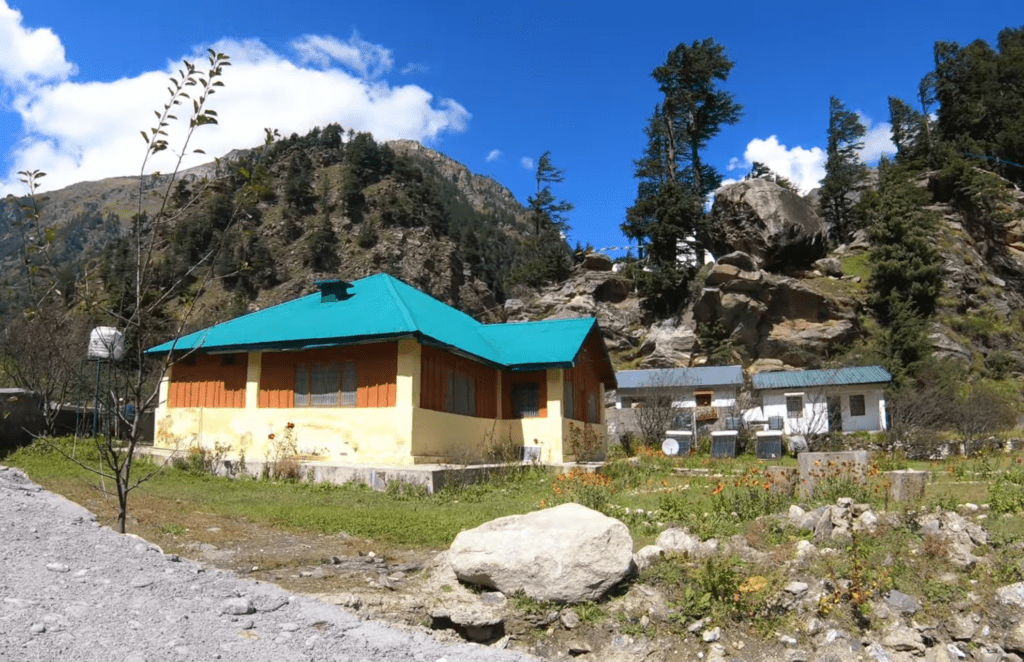
Of all the tourist destinations in Harsil, this is likely the one that is discussed the most. At one point, a man named Frederik E. Wilson lived there, but today the Uttarakhand government looks after it as a forest rest house. He was an East India Company soldier who left the company and made his home in Harsil Valley.
Wilson is recognized for a wide range of accomplishments and improvements to Harsil Valley. Along with other vegetables like apples and beans, he brought apple farming to the area and assisted in the construction of a 350-foot suspension bridge across the river. Along with establishing the local trade in deodar tree wood, wild animal fur and skins, and a number of other items that aided in the village’s prosperity.
Established by Mr. Wilson in 1864, it was constructed by a British Army deserter who was the Raja of Teri. Wilson relocated to Harsil and constructed this land after the Raja declined to provide for him.
After learning of this, the Raja began to get paid a certain amount for “leasing” his land. Wilson constructed a 350-foot suspension bridge for the locals to enjoy over Jagdanda. He was so adored that the locals still refer to him as Pahari Wilson.
Nelong Valley

Northeastern Uttarakhand, India’s Nelong Valley, also referred to as the Nelang Valley, is a secluded and pristine paradise. This high-altitude valley is near the Tibetan border, tucked away in the foothills of the Himalayas. Nelong Valley, a location that offers nature and adventure enthusiasts a distinctive and unusual experience, is well-known for its unspoiled beauty and untamed landscapes.
Restricted Easy Access:
Nelong Valley access is restricted, and visitors need to get special permits in order to enter the region. Because of the severe weather and abundant snowfall during the winter, the valley is closed. To travel the area safely, visitors must obtain permission from the local government and it is recommended that they hire a local guide.
Dharali Village

Dharali, which is roughly two kilometers from Harsil, is well-known for two things. First of all, it is believed that King Bhagirath meditated here in order to bring the Ganga down from heaven. The second thing that makes the village more beautiful overall is its apple orchards.
When apple picking is in full swing, enjoy a leisurely stroll through the town, mingle with the locals, and pick your own fresh apples from the trees.
Mukhba or Mukhwas Village

Another fascinating location that is well worth visiting is Mukhwas Village. It is a unique experience because of the traditional wooden houses, the verdant surroundings, and the friendliness of the locals. Engaging in cultural exchanges with the locals is another option.
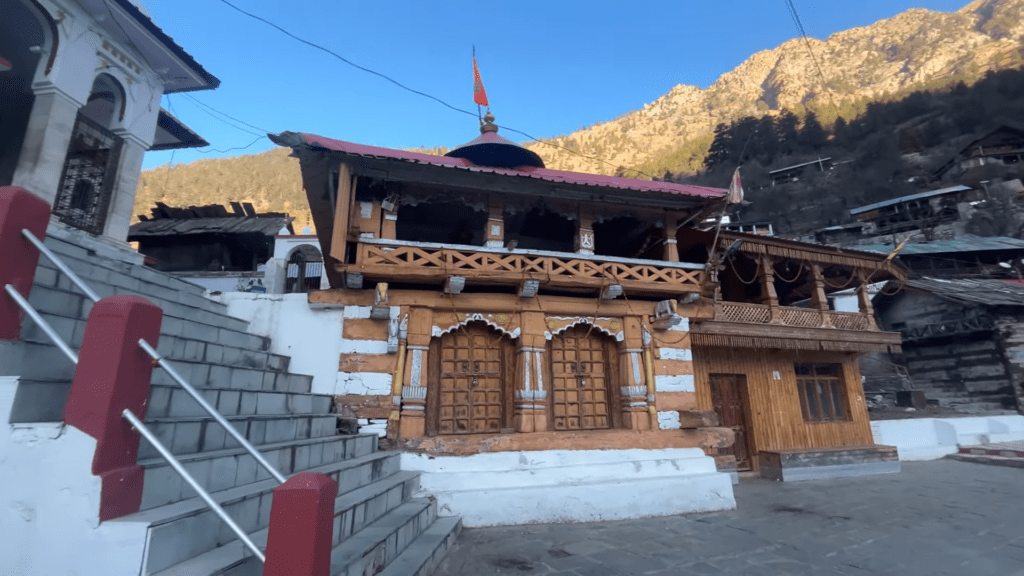
this village is also referred to as Mukhwas and Mukhwa. The idols are moved to the Ganges temple in Mukhba for a few months after the Gangotri temple closes for the winter. To visit the temple, you can simply go for a stroll in the evening from Harsil to Mukhaba.
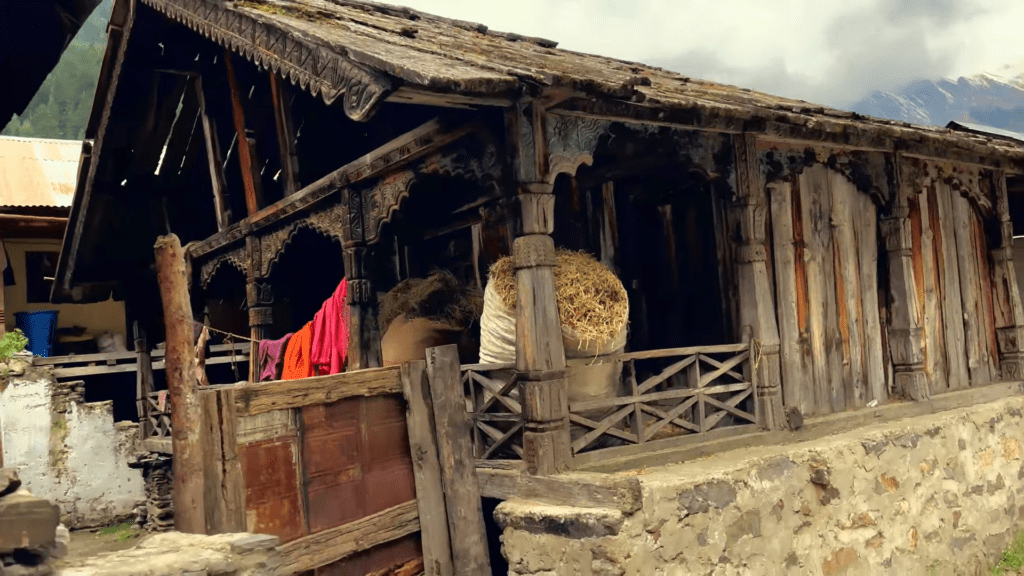
Gangotri

Gangotri, the home of the goddess Ganga, is a holy shrine that requires no introduction. The location of the holiest river must be a serene and lovely place, and it is. The majority of Hindus have always wanted to visit this stunning temple, which is located at a height of 3048 meters.

Gangotri is located 20 kilometres away from Harsil. The Himalayan and Bhagirathi rivers’ breathtaking displays will leave you in awe, so the location is well worth a visit.
Trekking in Harsil
One of the most popular tourist activities in Harsil is trekking. A complete beginner can tackle some of the trails that head out of the village. Some of the most well-liked treks in Harsil are listed below.
Trek Sattaal
This one is from Dharali village and is also called Sat Tal, Sat Taal, or Saat Taal trek. You discover a group of seven undiscovered lakes on this trek, which is only five kilometers from Dharali. This is the origin of its name, Sat, which means seven, and Taal, which means lake.
It will lead you through breathtakingly gorgeous scenery that is rich in wildlife and flora. The trek can be easily finished in a single day, which is its best feature. You leave early in the morning, travel to the lakes, and arrive back in Harsil by evening.
At Mridunga Taal, the altitude will be 9600 feet, and at Bakria Taal, it will be 10,034 feet. Dabria Taal, Chadkia Taal, and Rikh Taal are the other three lakes that are situated in between. These are the five lakes you will visit in a single day because the other two are much higher up and will take more than a day to hike.
Kyarkoti Lake
This lake is the sixth of the seven lakes mentioned previously. It’s a two-day trek from Dharali, about fifteen kilometers away. After arriving at the lake on Day 1, you will camp for the night and depart for Harsil on Day 2.
Trek Chitkul
You read correctly. We are discussing Chitkul, which is located in Himachal Pradesh’s Kinnaur Valley. Following Kyarkoti Lake, you will cross the seventh of the seven lakes en route to Lamkhaga Pass, 5,282 meters at 17,320 feet. You will walk to Rani Kanda Meadow and then on to Chitkul after crossing Lamkhaga Pass. You will need seven to ten days to complete this.
Gaumukh
Not to mention, the well-known Gaumukh trek from Gangotri is the most well-liked of all of these treks. Over the course of two days, you will cover roughly 36 kilometers on foot to reach Gaumukh’s maximum elevation of 13,200 feet (4,023 meters). You could certainly prolong your hike to Tapovan if you had more time.
Other things to do near Harsil valley
You can spend your free time exploring the region’s many undiscovered trails. The majority of these trails will take you to breathtaking vistas of gorgeous lakes, cascading waterfalls, and everything in between. It is an excellent method of teaching the value of living naturally.
The village itself is a prime example of environmentally conscious tourism, offering peaceful surroundings and opportunities for yoga, meditation, and other activities. Talking to the locals and getting to know them will help you understand their way of life and how easy it is for them to survive without many of the conveniences we take for granted.
Harsil Valley is a place of breathtaking beauty and spirituality, but it’s also a treasure mine of unusual, hidden gems just waiting to be discovered. These distinctive encounters serve as your entryway to a deeper relationship with the valley and its friendly residents.
Village Visits
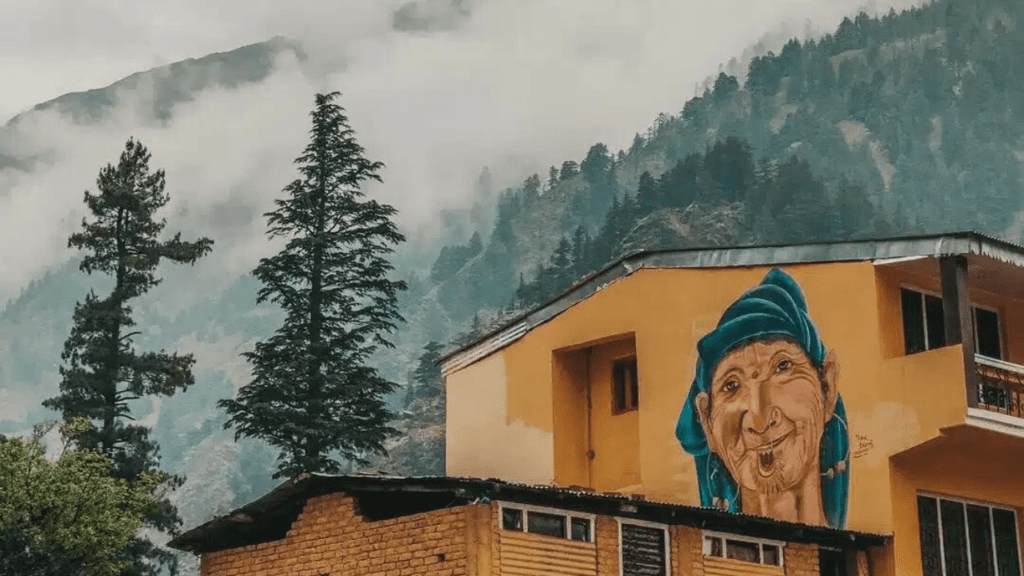
Going to the nearby villages is one of the most satisfying off-the-beaten-path adventures in Harsil Valley. You will be able to observe rural life, investigate antiquated customs, and develop a greater understanding of the local heritage and culture.
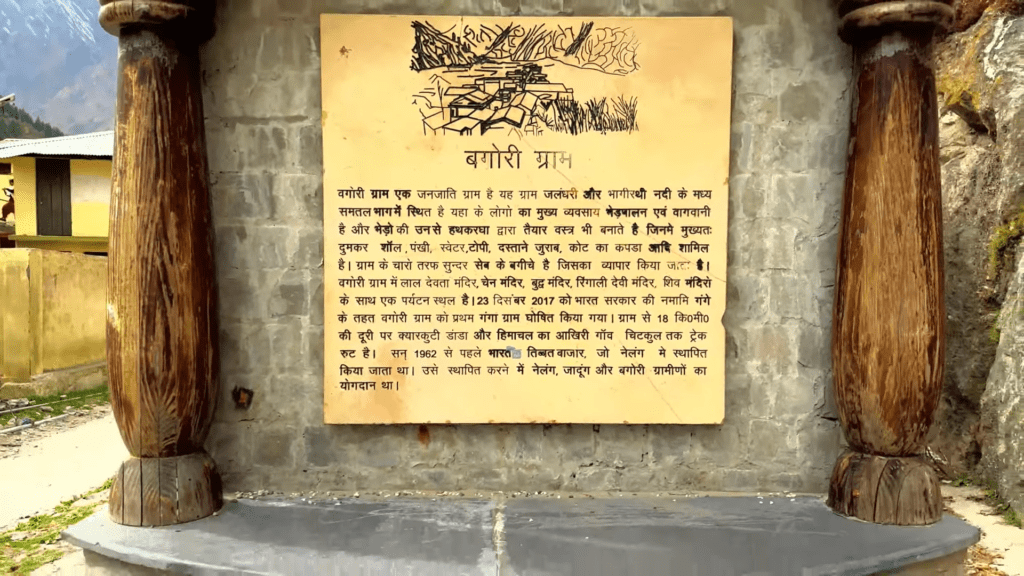
Talking to Locals
The inhabitants of Harsil are renowned for their friendliness and warmth. Engage in conversation, offer them a cup of chai (tea), and hear their tales. This cross-cultural interaction is a rewarding experience that will make you remember it forever.
Cultural Intake
If you happen to be visiting during a festival, take part in it. A peek at the rich culture of the area can be found in the colorful celebrations and customs. Please don’t pass up the chance to enjoy the delicious and diverse local cuisine.
Visiting Apple Orchards in Harsil Valley
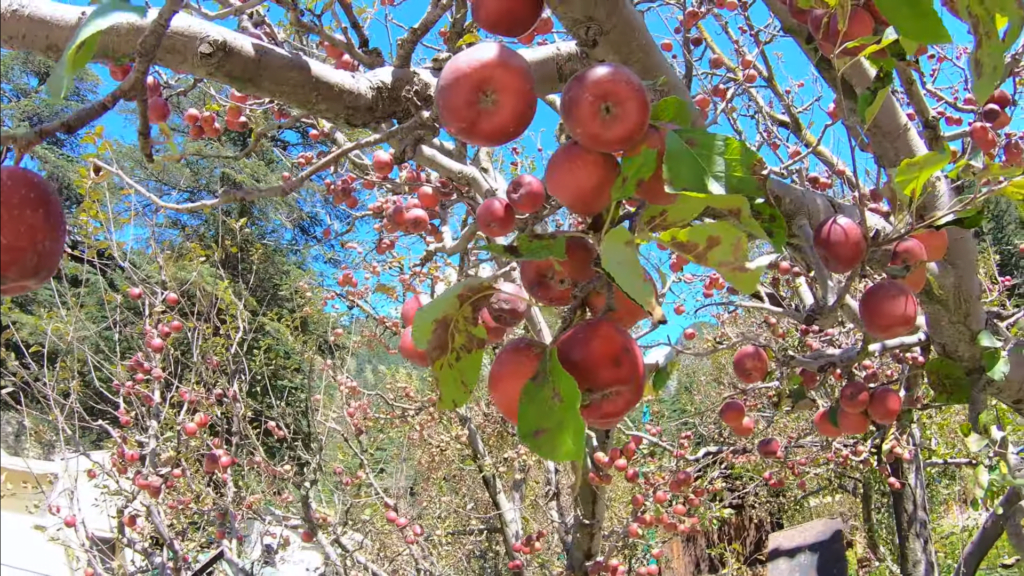
In addition to being admired for its unspoiled beauty and spiritual significance, Harsil Valley is known for its thriving apple orchards. These orchards are an important part of the local economy, supporting many people’s livelihoods and making a substantial contribution to the state’s horticultural industry.
This area produces some of India’s best and healthiest apples because of the ideal fusion of organic farming techniques, traditional farming methods, and environmental factors. These apples, which are mostly Royal Delicious and Red Delicious types, are prized for their outstanding quality and unique flavor.
Accommodations in Harsil
You can stay at a few simple, affordable guesthouses in Harsil. There aren’t any five-star hotels here because it’s more of an unusual destination. Nevertheless, despite having few amenities, the guest houses that are offered will be quite cozy.
Additionally, the government has established a GMVN guesthouse.
Your ability to negotiate and the time of your arrival will determine the final cost. However, a room here ought to cost you between Rs. 800 and Rs. 1500. My recommendation is Sunder Homestay
Where to Eat
You can have food at a few little dhabas in the village. Simple north Indian fare and a few Garhwali dishes, nothing fancy though. The cuisine will be basic but adequate in flavor.
Conclusion
Tucked away in the heart of the Himalayas, the Harsil Valley reveals a world of unspoiled beauty and cultural diversity. It is an unusual location that provides a special fusion of the abundance of nature and enlightening cultural encounters.
A Symphony of Beauty: The Bhagirathi River meanders gently through the valley, surrounded by thick forests of deodar, pine, and oak trees, and lush meadows. Harsil Valley is a masterwork. It’s a haven for hikers, lovers of the outdoors, and people looking for peace.
Unusual Experiences: Explore undiscovered treasures such as Dharali and Mukhwas villages, where cultural exchanges and a pause in time enhance your travels. Participate in regional celebrations, exchange tales, and take in the lively culture.



